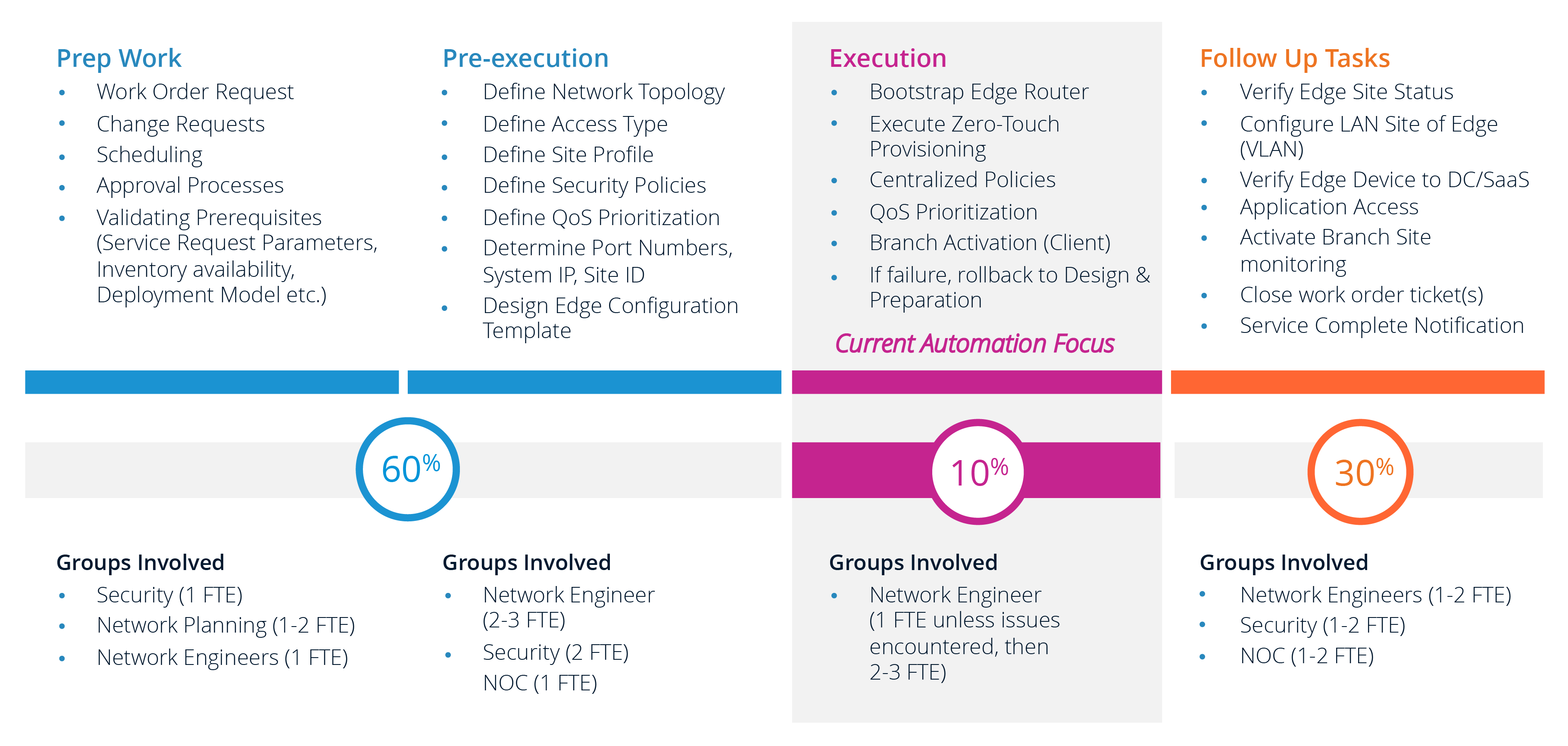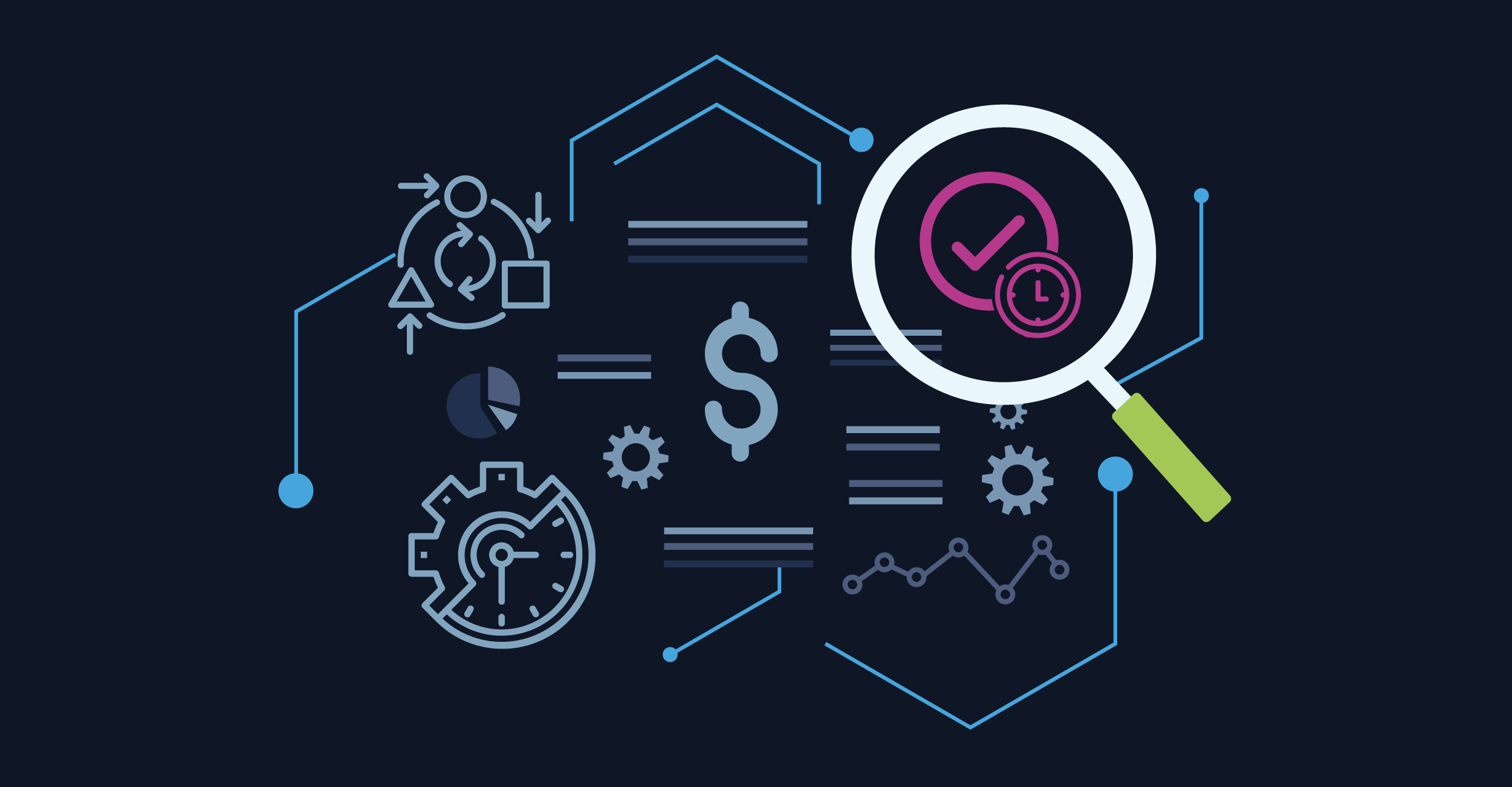One thing I come across often at Itential is need to explain why it’s critical for network teams to start thinking about how network automation will not just help them to do their jobs more effectively, but how automation will benefit their business. In this blog series, I am breaking down the four key metrics that help teams measure the impact and build their business case for network automation:
By using these metrics, it becomes much easier to successfully communicate the business benefits of network automation with executive leadership. In this blog, I’d like to take a deep dive into the third key metric, “Time-to-Complete” to help better understand why and how to calculate this metric.
Why Measure Time-to-Complete
The focus of utilizing this metric it to understand how long it takes for an automation use case to execute, from the time the task is identified to when it is fully complete. During solution evaluation, teams should prioritize on platforms that can automate as much of the overall business process as possible to reduce the total time-to-complete.
One big reason to measure this metric is that it allows teams to pick a solution based on their ability to offer the lowest feasible time-to-complete. This means you can prioritize your selection of solutions by selecting for the option that offers the highest percentage of tasks in the activity that can be automated, and at the same time eliminates as much idle time as possible.
Another reason to measure time-to-complete is that is closely connected to Service Level Agreements. Today, SLAs are based on human processes with allowances for reasonable timeframes for handoffs, idle time, etc. By effectively leveraging automation to reduce your time-to-complete, teams will be able to execute much faster than the SLA in the near term, and to deliver on shorter SLAs in the future.
How to Measure Time-to-Complete
This metric is focused on the total elapsed time for an activity to be completed – from the point when the activity is requested to the point when the ticket is closed. To calculate this metric, you must determine the total elapsed time, including any idle time due to handoffs, delays, approvals, or scheduling as seen in the following equation:

When calculating your time-to-complete, it’s important to keep in mind that some processes, no matter how much automation you implement, will still have activities that must be performed manually. For example, automation can’t speed up the time required to ship a device to a branch office. However, there are ways an automation platform can still improve total time to complete in these situations. By automating activities like staging network changes and by listening to the network for notifications that the device has been powered on and is ready for provisioning, you can start to eliminate some idle time and will shorten the time-to-complete.
Automating 100% of the Process
To better illustrate this, let’s take a look at an example activity – SD-WAN implementation. You’ll notice that this process has a significant amount of time and activity related to planning, scheduling, designing, and preparation, which are all supported by a number of people from different groups such as security, planning, engineering, and NOC.

The process includes a fair amount of idle time for approvals and handoffs between groups, and for other things like transportation and delivery of the required hardware. In most processes like this, this idle time is the primary contributor to high time-to-complete. Requests will sit in email boxes or in ticketing systems, and they may sit there for a while before the next person in the chain performs their activity.
By leveraging this metric, you can start to find ways to automate outside of the normal 10% of the process focused solely on execution in efforts to reduce your overall time-to-complete. Check out Itential’s on-demand webinar, “Stop Ignoring & Start Automation: How to Rethink Your Approach” to learn more about how to expand your automation efforts past the 10%.
How to Use this Metric
When you utilize the time-to-complete method, it becomes apparent than an automation approach exclusively focused execution activities such as provisioning a device doesn’t help to reduce the time-to-complete for any use cases. By using this metric to choose a platform that can interact across the teams and related systems will accelerate process completion by expanding automation across other activities such as performing approvals (when certain conditions are met) or gathering information from systems instead of waiting for manual inputs from swivel-chairing.
The critical factor in this case is selecting an API-first automation approach that can actually reduce your time-to-complete by integrating with the teams and systems required to automate the full end-to-end process.
Be sure to keep an eye for the last blog in our Key Metrics series breaking down each remaining metric, or check out the prequel blog to get a full overview of the four metrics. Also, get a more in depth look into all 4 key metrics and how to create a metric driven automation strategy, watch Itential’s on-demand webinar, “Measuring & Maximizing the Business Impact of Network Automation.”





